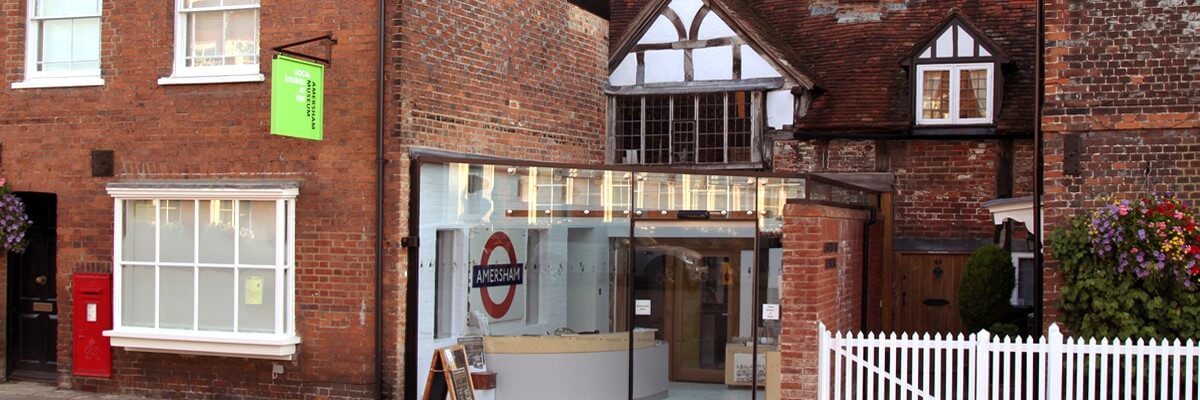This article appeared in the Amersham Society News-sheet in January 1991 and was written by Nicholas Salmon
For many years the only detailed information we had concerning the Amersham Cotton Factory was derived from Mr B Godwin’s ‘Memoirs of Richard Morris’ which were published in London in 1819. According to Godwin’s account, Morris was a local Baptist Minister who had originally come to Amersham in 1775 from his native parish of Radcliffe in Lancashire. Inspired by his knowledge of the cotton industry in his home county he had entered into partnership with Messrs John & Thomas Hailey and acquired a piece of land at Bury End (near what is now the Tesco Superstore) as the site for a factory.
Built to his plans, the factory was one of the largest in the south-east of England and was fitted up with all the latest machinery necessary for spinning, weaving and bleaching the cotton. Much of this machinery was designed to Morris’s own specifications and he appears to have developed a profitable side-line selling his designs to other manufacturers. The new factory commenced production in 1789.
From Godwin’s account we learn that the calicoes produced by Messrs Morris & Co. were found to be of a superior quality which led to a rapid demand for the firm’s products during the first dozen years of its existence. As some point, Morris took two further partners into the firm and the original premises were considerable extended.
Like the whole British cotton industry, the Amersham factory was badly hit by Napoleon’s introduction of the ‘Continental System’. The workforce was gradually laid off and the factory finally closed in 1807. This closure appears to have caused widespread distress in the town and Morris along with a consortium of six local gentlemen – which is supposed to have included members of both the Drake and Weller families – re-opened the factory in 1808 in order to relieve some of the worst poverty in the town. This turned out to be only a short respite for the factory closed for good in 1809.
According to Godwin, the stocks and machinery were divided and the estates sold off by auction. Part of the premises was subsequently purchased by Joseph Jennings, a London silk-crepe manufacturer, who continued to employ a considerably reduced workforce in making silk-crepe until the middle of the nineteenth century.
For a long time the only confirmation of the existence of this factory was to be found in the ‘Buckinghamshire Posse Comitatus’ (1798) in which the unusually high figure of 28 men are recorded as textile workers and the ‘Topographical and Statistical Description of the County of Buckingham’ (c.1800) which described the factory as at that time employing “upwards of a hundred persons”.
More recently however, a number of indentures relating to the Cotton Factory have come to light which have enabled us to fill in some gaps in its history. As Godwin stated, the factory was founded by Richard Morris and Thomas Hailey (there is no mention of John Hailey) in 1789 in a converted barn on Factory Meadow opposite Bury Farm.
The success of this enterprise seems to have come to the attention of two London drapers John Fenn and Joseph Wickenden, who entered into partnership with Richard Morris and Thomas Hailey in 1796. Such a partnership would have undoubtedly been beneficial to both sides because it cut out the need for a middleman in the process of retailing the cloth.
It appears that as payment for their share in the business, John Fenn and Joseph Wickenden purchased further land, described as between ‘Great Pondwicks and Barn Meadow’ from John Lawrence (Gentleman), Richard Norwood (Tanner) and John Fowler (Innholder). On this was built what was described in an indenture of 1807 “as a Cotton Mill, Spinning Shops, Weaving Shops, Ware Houses, Drying Shed and a Counting House”.
Up to this point most of the facts concerning the history of the Cotton Factory are consistent with those given by Godwin. However, he appears to have embellished the circumstancessurrounding the re-opening of the factory in 1808. The indentures reveal that in 1807 Morris and other three partners sold the whole business for £3,400 to a consortium of Amersham businessmen which consisted of John Sargeant, William Morten, John Weller, William Weller and Timothy Honnor. If the factory was indeed re-opened in 1808, Morris certainly no longer had any financial interest in the business, though it is possible that he was retained as a manager. This consortium in turn sold the factory to the Drakes in 1811.
Although the documents at the Buckinghamshire Record Office are listed as containing a plan of the Mill buildings at the time of the sale to the Drakes in 1811, I have been unable to locate this, so the exact site of this important feature of Amersham’s industrial heritage remains a mystery. (Editor’s note: it is now thought that the mill was at Bury End, the other side of the road from Bury Farm.)

